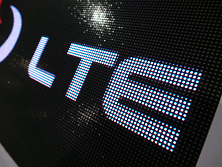The emergence of Category 6 chipsets could challenge Qualcomm’s dominance of the LTE chip market, new research has claimed.
A new report from ABI Research has said Cat6 chips, which can enable speeds of up to 300MBps, will pass the 700 million cumulative sales mark by the end of 2019. By contrast, shipments of Cat4 chipsets, which offer speeds of up to 150MBps, only hit the 42 million mark last year.
Malik Saadi, Practice Director at ABI Research, said: “Qualcomm is the market leader when it comes to supplying LTE chips for mobile devices. The company maintained an unrivalled leadership across several generations of LTE, but with the emergence of Cat6, some specific competitors could challenge Qualcomm in this market space.
“However, other mainstream chipset suppliers such as Spreadtrum and MediaTek might enter the race for LTE speed quite late as these vendors will focus more on entry level LTE devices rather than competing in the very high-end segment of LTE market, where Cat6 chips will be deployed.”
Despite the relatively low sales of Cat4 chipsets, they will become the most used category after 2016, when they will hold a 55 percent market share. ABI Research said while sales of Cat3 chipsets are falling, they will be used in cheaper handsets in the years to come, before settling at a share of under 15 percent on 2019.
Saadi added: “Although a number of chipset suppliers have announced their Cat6 basebands, mobile operators are not yet launching commercial networks that will allow users to enjoy mobile broadband speeds exceeding 150Mbps. An exception to this is SK Telecom which recently launched an LTE-Advanced service, offering speeds up to 225 Mbps.”
As more and more operators launch Cat6 compatible networks, the level of shipments will surge from 3.6 million in 2014 to more than 347 million in 2019, or 24 percent of the total LTE market. The research agency said it expected the first chips enabling downlink speeds of more than 300MBps to hit the market in 2017.
Read more:
Operators have “over-delivered” on LTE, as adoption grows at 50 percent



